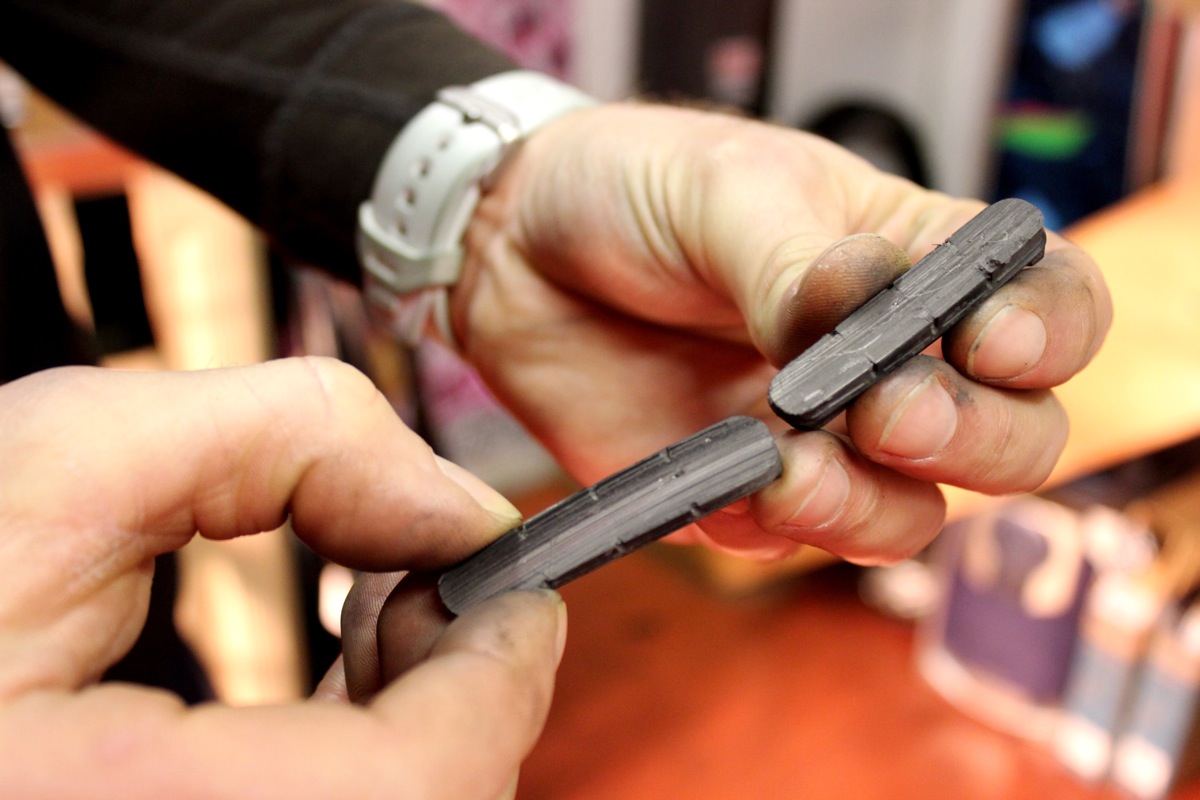4. Tension the spoke and check the trueness of the wheel
-
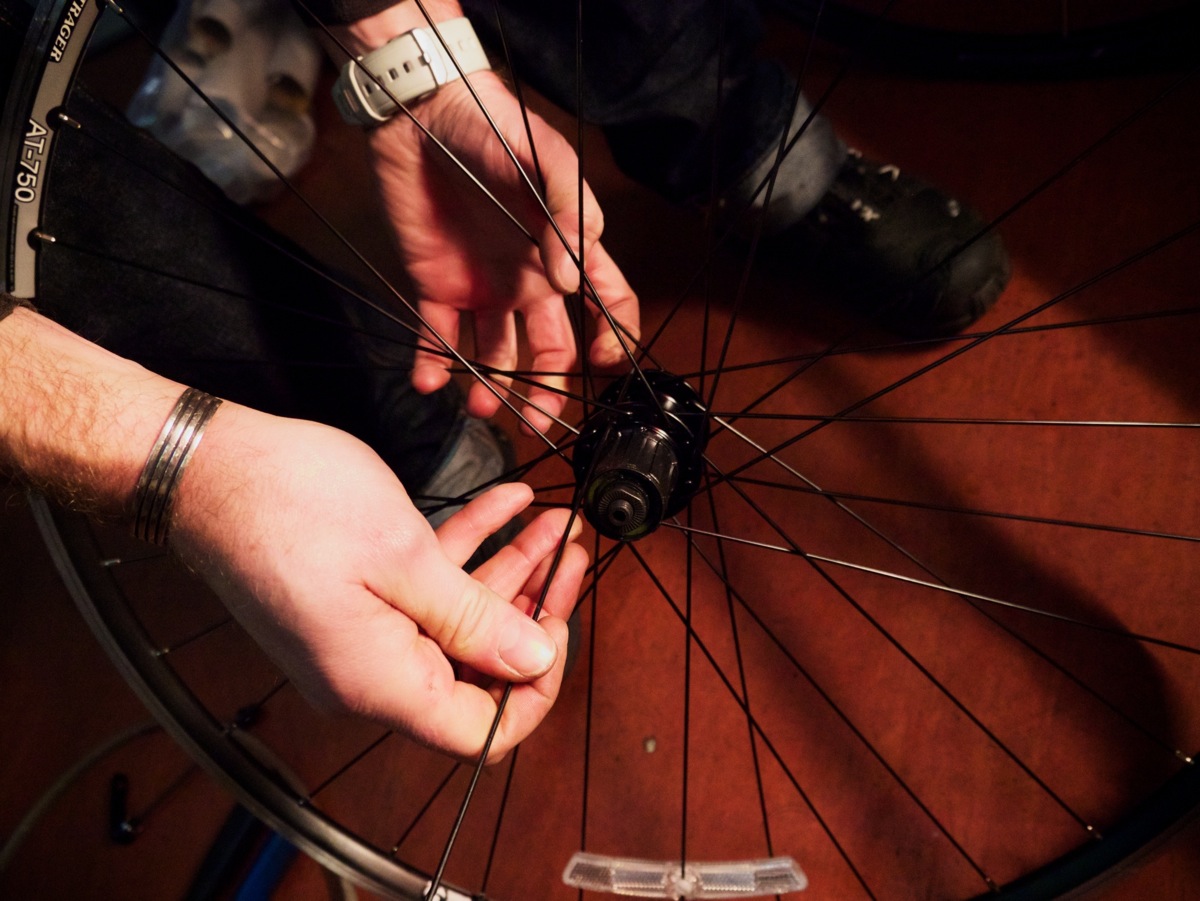
A broken spoke is relatively to fix with the right tools
-
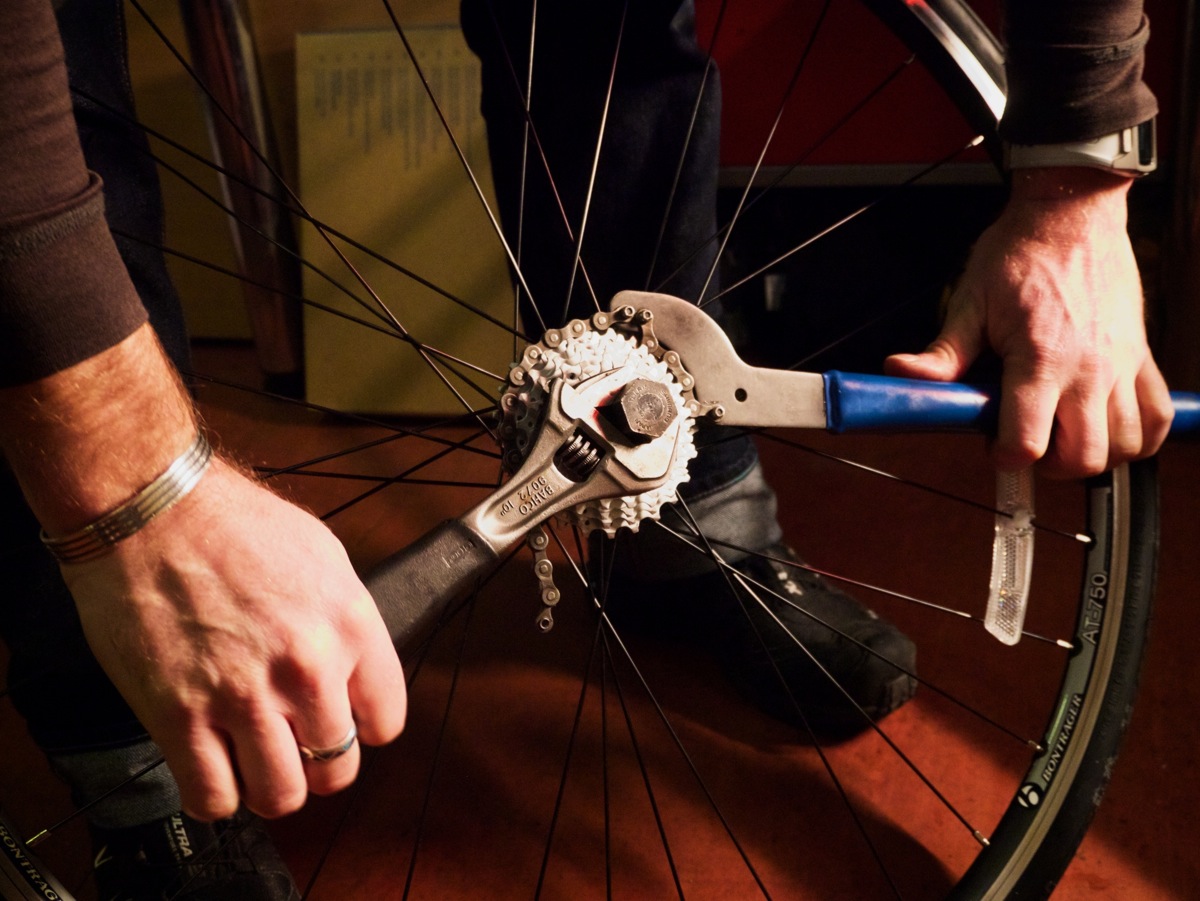
A chainwhip holds the cassette in place while the wrench and cassette tool is applied to remove the lockring
-
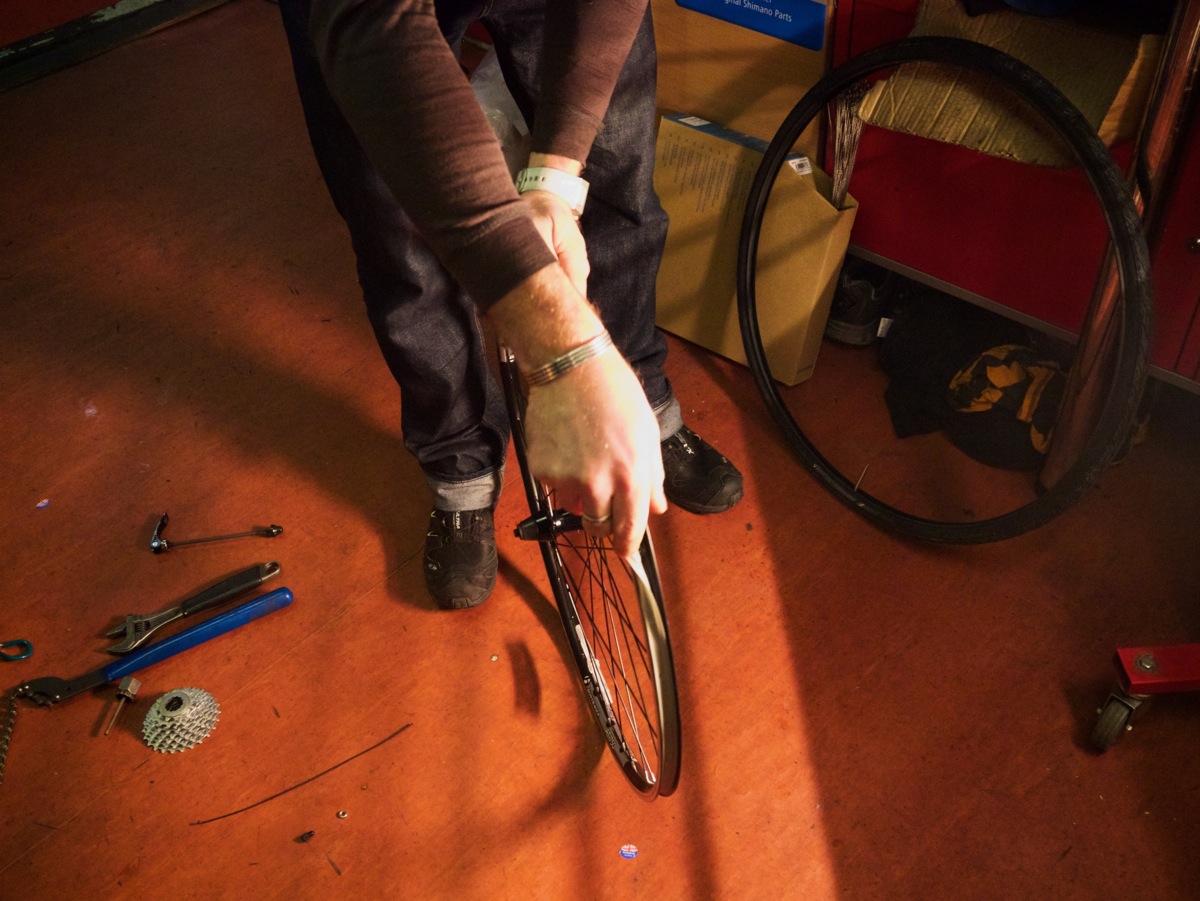
Remove the rim tape to gain access to the spoke nipples
-
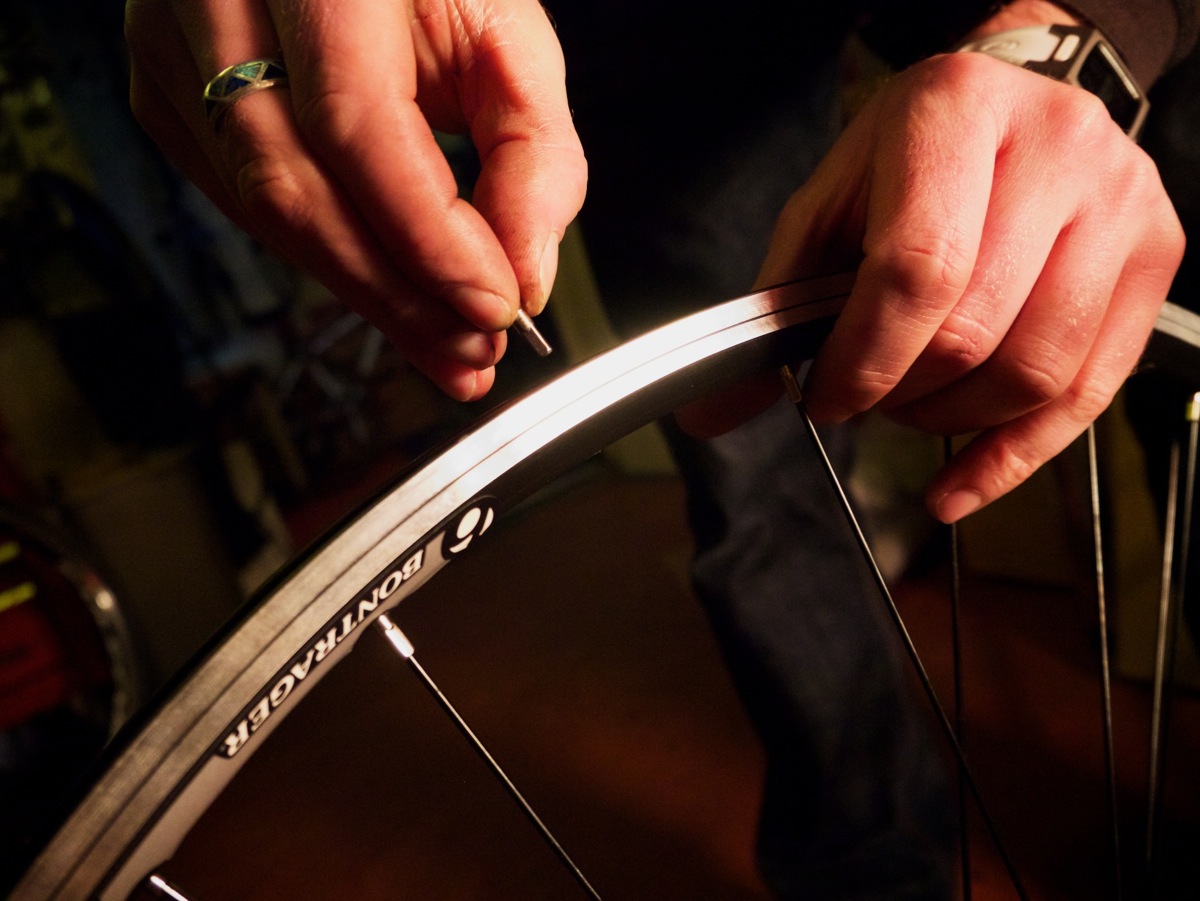
Be extremely careful when placing the nipple in the rim
-
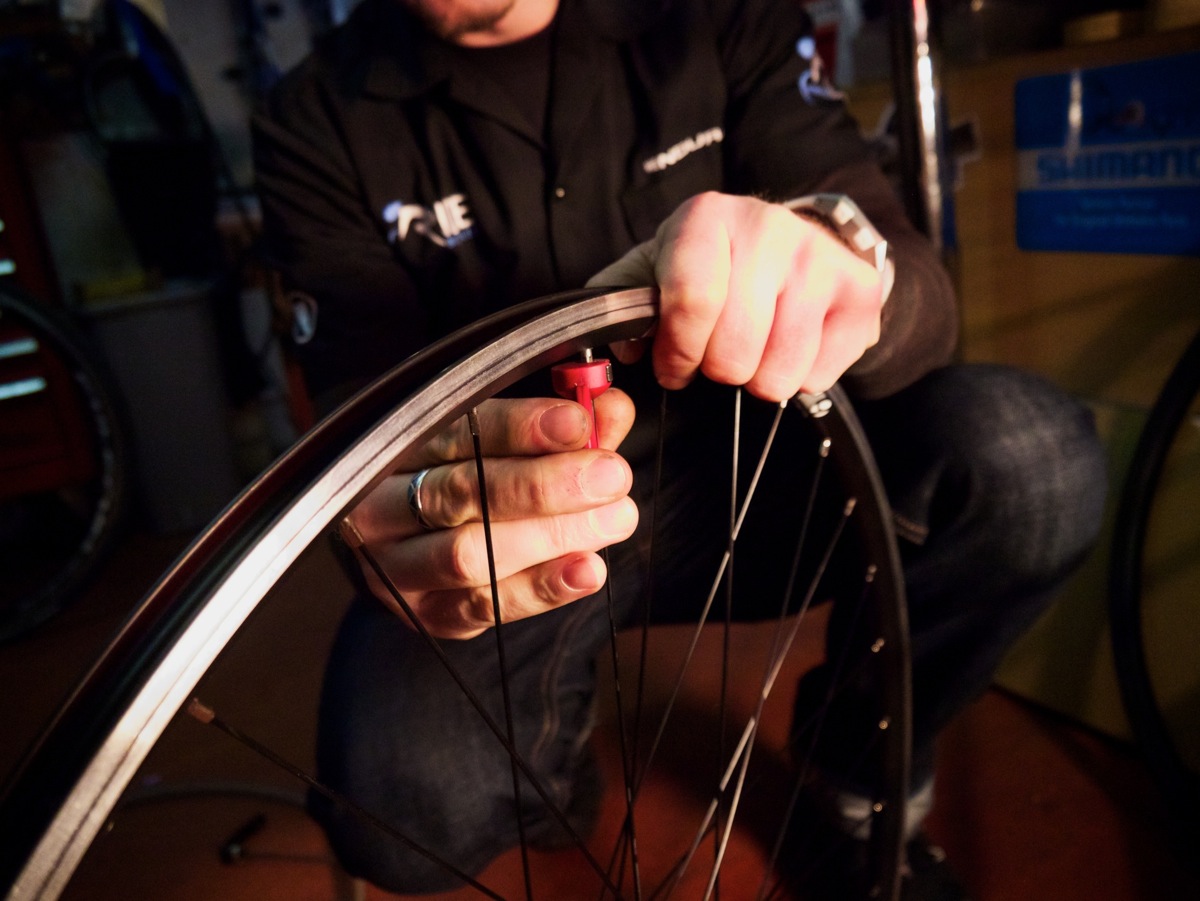
Use a spoke key to bring the replacement spoke up to tension
-
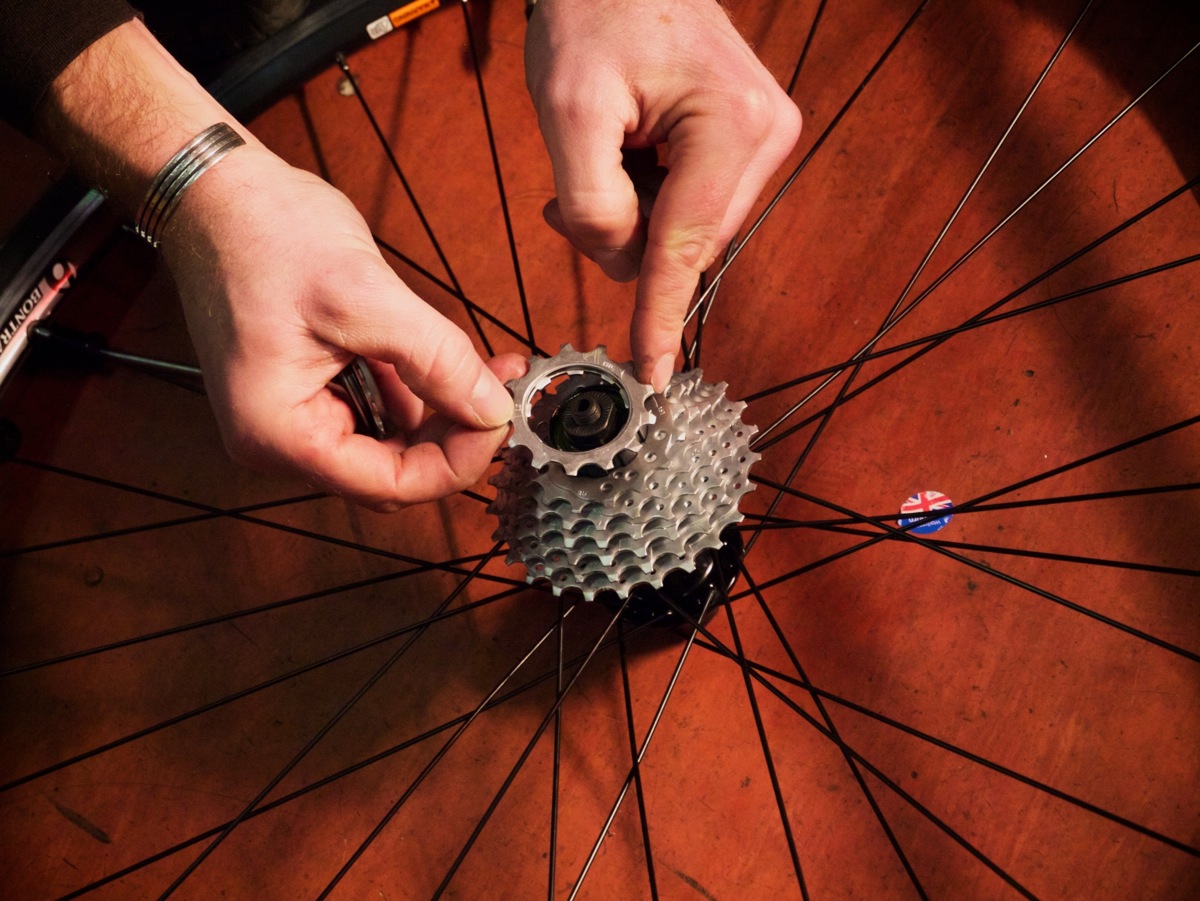
Ensure the spacers are replaced correctly before tightening the lock ring
-
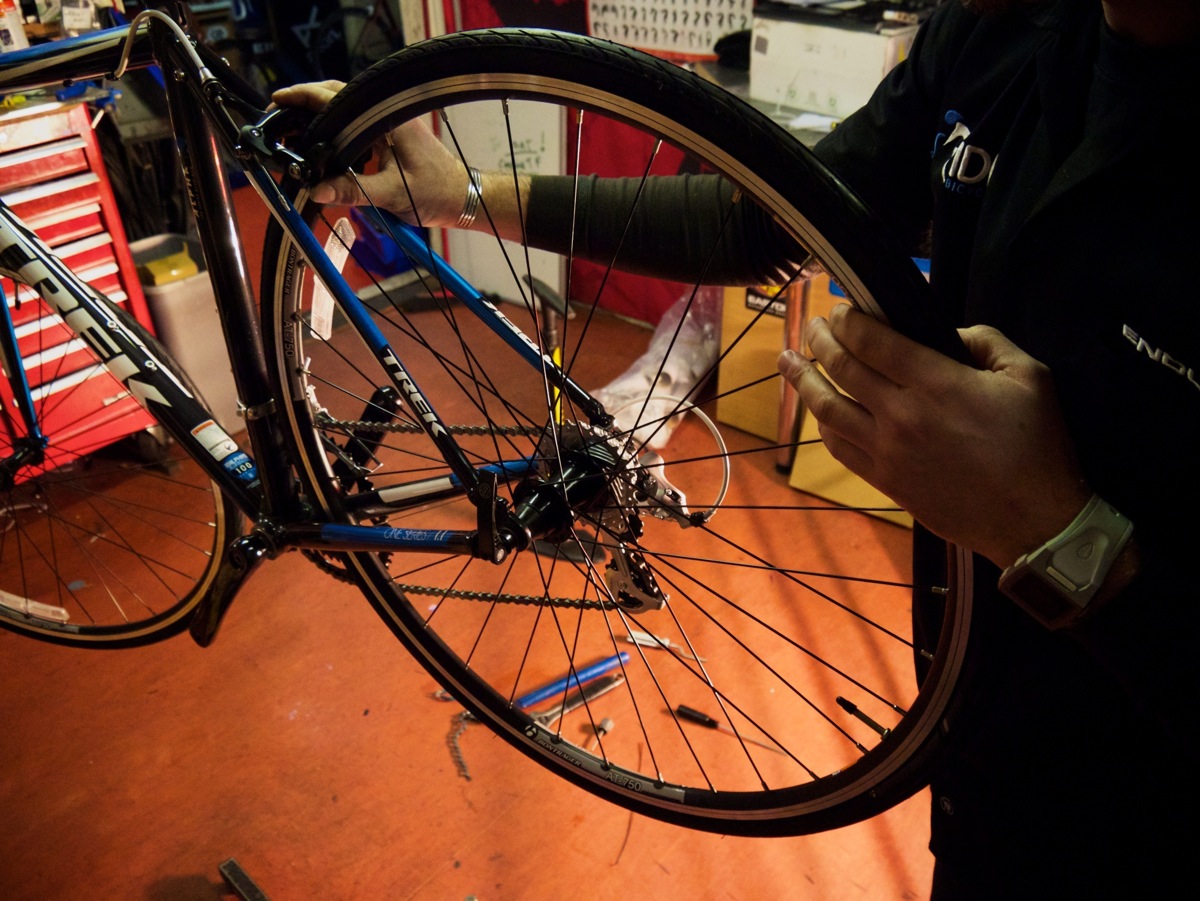
Check the function of the brake and the gears when replacing a trued wheel
4. Tension the spoke and check the trueness of the wheel
Removing a spoke ‘throws out’ the tension of the entire wheel.
In theory, tightening the replacement spoke to the tension of the one replaced will restore the wheel to the degree of trueness experienced before the damage. Use a spoke key to do so.
Spoke tension can be gauged by sound and ‘feel’ (squeezing the spokes to ensure equal tension – ‘feel’ will come with experience). The pitch of the note raises as the spoke is brought up to tension.
You then need to check the trueness of the wheel and if you don’t have a wheel jig, brake pads will serve the same function.
Reinstall the quick release, return the wheel to the frame, and use the pads to check for ‘buckle’ in the wheel (‘buckle’ is typically caused by an imbalance of spoke tension).
A wheel with a buckle to the left (touching the left brake pad) will require tension in a spoke or spokes on the right hand side in the same area of the wheel. Be sure not to over-tension and cause a buckle in the opposite direction.
The ‘length’ of the buckle will determine the number of spokes to be tensioned. If the buckle is over one spoke, only one spoke need be tensioned. Apply tension with a spoke key, a quarter of a turn at a time.
In our demonstration, replacing a spoke on the driveside, an over-tightened spoke would cause a buckle towards the right side of the bike; a under-tightened spoke on the driveside would cause a buckle to the left.
A wheel can be trued on two planes; vertical and horizontal. It’s highly unlikely that replacing a single spoke will affect a wheel’s trueness in the vertical plane. This is more likely to be caused by a damaged rim.




